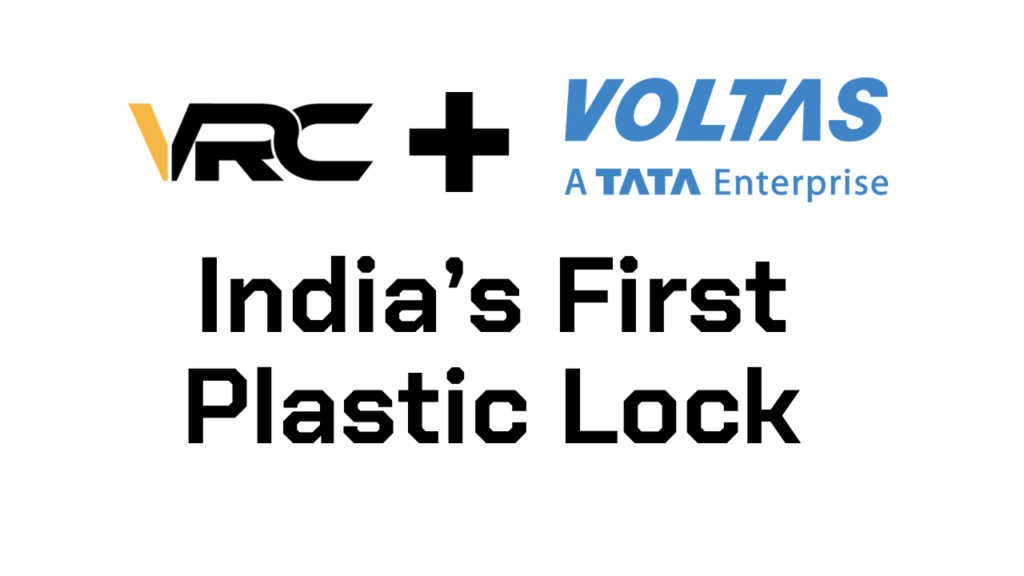How VRC Plasto Mould Invented India’s First Plastic Lock
The Journey of Innovation: How VRC Plasto Mould Invented India’s First Plastic Lock

Innovation often stems from a simple idea, a need to improve upon something that already exists. At VRC Plasto Mould, we’ve always been committed to pushing the boundaries of what’s possible in plastic manufacturing. Today, we want to share the story of how we invented India’s first plastic lock—a journey of creativity, problem-solving, and relentless pursuit of excellence.
The Genesis of the Idea
The concept of creating a plastic lock came to us through a blend of market observation and customer feedback. Traditional metal locks, though effective, come with several challenges. They are prone to rust, add significant weight to products, and often have higher production costs. Additionally, there was a growing demand in various industries, especially in sectors like consumer electronics and home appliances, for lighter, more versatile locking mechanisms that didn’t compromise on security.
At VRC, we recognized this gap and saw an opportunity to innovate. The challenge was clear: could we design a lock that offered the same level of security and durability as a metal lock but was lighter, more cost-effective, and resistant to environmental factors like rust?
From Concept to Prototype
With a clear vision in mind, our team of engineers and designers began the process of research and development. The first step was understanding the material science behind plastics that could be used in a lock. Not all plastics are created equal—some are too brittle, while others may not offer the necessary strength or durability. After extensive testing and trials, we identified a high-performance polymer that was not only lightweight but also incredibly strong and resistant to wear and tear.
Next came the design phase. Creating a plastic lock wasn’t just about replicating a metal lock in plastic; it was about rethinking the entire mechanism to leverage the advantages of plastic while maintaining the security features. Our team experimented with various designs, focusing on aspects like the locking mechanism, the strength of the shackle, and the overall durability of the lock.
Overcoming Challenges
As with any innovation, the road to success was not without its challenges. One of the biggest hurdles we faced was ensuring that the plastic lock could withstand the same level of force and tampering as a traditional metal lock. Our engineers conducted rigorous testing, putting the lock through various stress tests, including impact resistance, load-bearing capacity, and exposure to extreme temperatures.
Another challenge was the perception of plastic as a ‘less secure’ material compared to metal. We knew that in order to gain market acceptance, we had to not only prove the lock’s strength and durability but also educate our customers on the advantages of using plastic over metal in certain applications.
Next came the design phase. Creating a plastic lock wasn’t just about replicating a metal lock in plastic; it was about rethinking the entire mechanism to leverage the advantages of plastic while maintaining the security features. Our team experimented with various designs, focusing on aspects like the locking mechanism, the strength of the shackle, and the overall durability of the lock.
The Breakthrough
After several iterations and countless hours of testing, we finally developed a prototype that met all our stringent requirements. The plastic lock was not only as secure as its metal counterparts but also offered additional benefits like resistance to rust and corrosion, making it ideal for outdoor use or in humid environments.
The lock was also significantly lighter, which opened up new possibilities for its use in industries like luggage manufacturing, where every gram counts. Moreover, the cost-effectiveness of plastic allowed us to offer this lock at a competitive price point, making it an attractive option for budget-conscious customers without compromising on quality.
Another challenge was the perception of plastic as a ‘less secure’ material compared to metal. We knew that in order to gain market acceptance, we had to not only prove the lock’s strength and durability but also educate our customers on the advantages of using plastic over metal in certain applications.
Next came the design phase. Creating a plastic lock wasn’t just about replicating a metal lock in plastic; it was about rethinking the entire mechanism to leverage the advantages of plastic while maintaining the security features. Our team experimented with various designs, focusing on aspects like the locking mechanism, the strength of the shackle, and the overall durability of the lock.
The Breakthrough
When we finally launched India’s first plastic lock, the market response was overwhelmingly positive. Our customers appreciated the innovative approach, and the lock quickly gained traction in various sectors. The success of the plastic lock not only cemented VRC Plasto Mould’s reputation as a leader in plastic innovation but also demonstrated the potential of plastic as a material for security applications.
The invention of the plastic lock was a significant milestone for VRC Plasto Mould, but it’s just one example of our commitment to innovation. We continue to explore new ways to use plastic to solve real-world problems, always with the goal of delivering high-quality, cost-effective solutions to our customers.
In the end, the story of India’s first plastic lock is a testament to what can be achieved when a team of dedicated professionals comes together with a shared vision. At VRC Plasto Mould, we’re proud of what we’ve accomplished, and we’re excited to continue our journey of innovation, creating products that not only meet the needs of today but also anticipate the demands of tomorrow.
